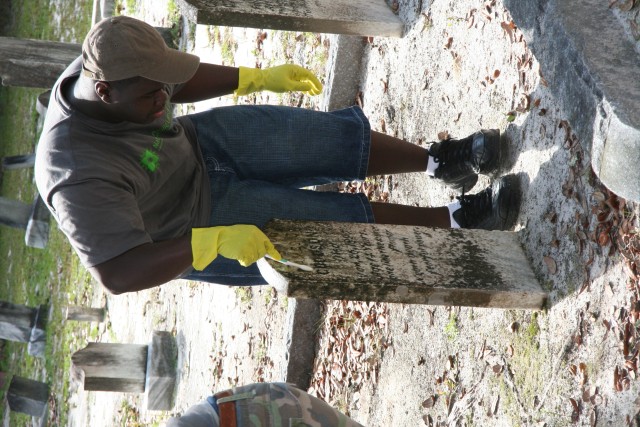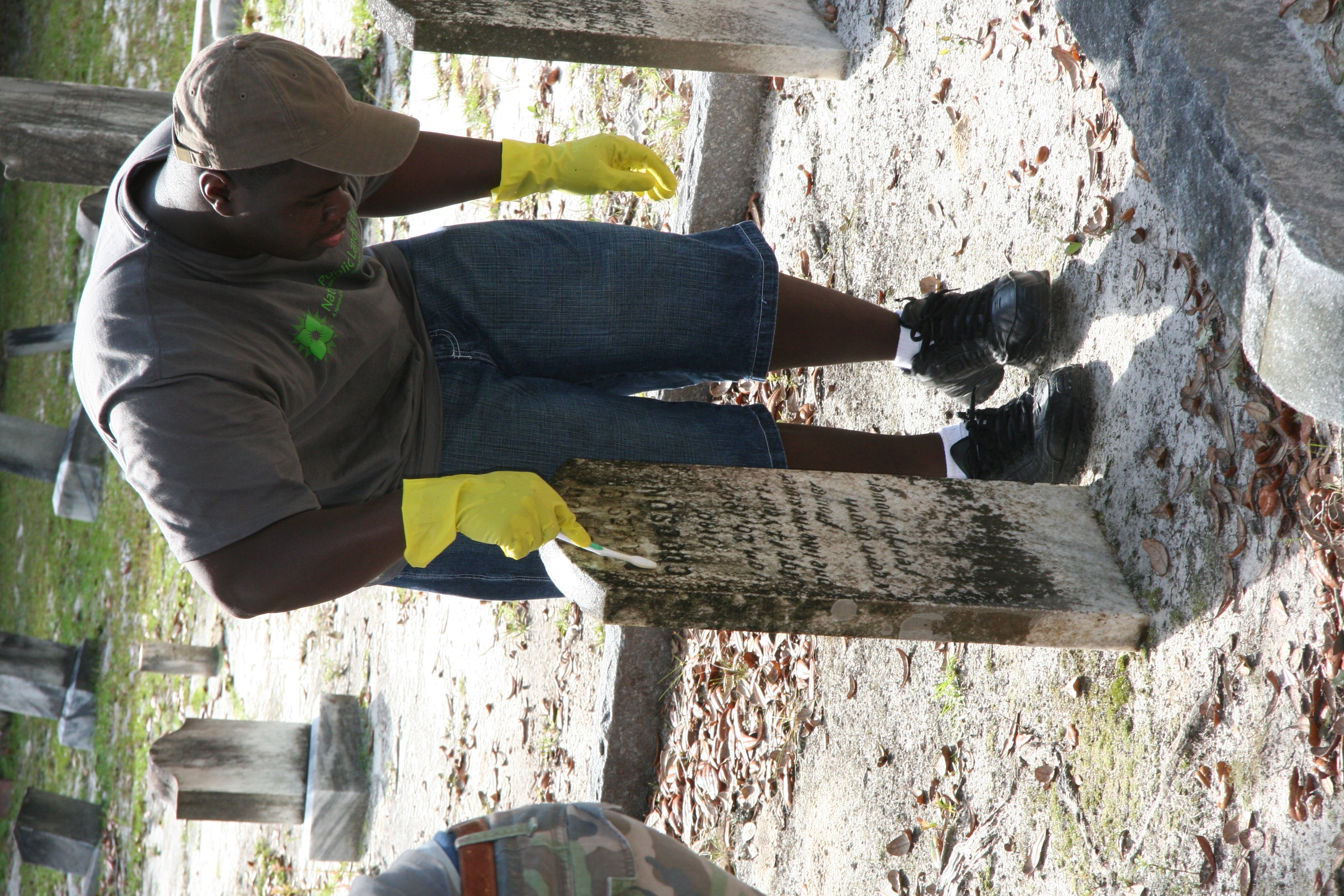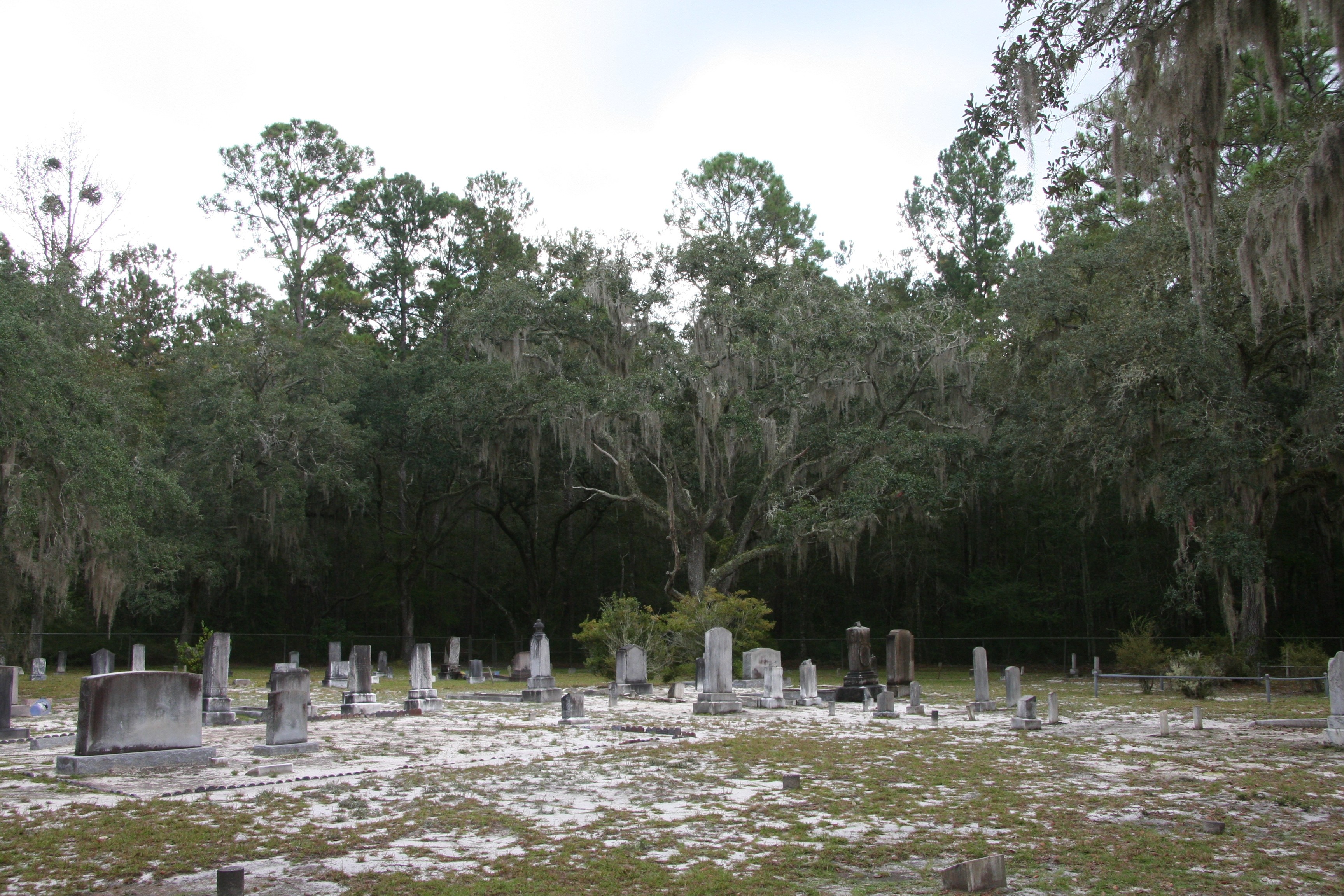FORT STEWART, Ga. - With a little water and a good heart, more than 20 volunteers uncovered a lot of history during Fort Stewart-Hunter Army Airfield's observance of National Public Lands Day with a clean up of Bragg and Dreggars cemeteries, Sept. 26.
Teaming with the Directorate of Public Works Environmental Division, Forestry workers, the Fort Stewart-Hunter Army Airfield Cemetery Council and community volunteers pitched in to clean headstones at two of the installation's 60 cemeteries for the NPLD project.
National Public Lands Day is the nation's largest effort where volunteers try to enhance America's public lands, according to www.publiclandsday.org. The Web site noted in 2008, 120,000 volunteers built trails planted more than 1.6 million trees and built bridges in their clean-up efforts.
Brian Greer, DPW Environmental, Natural Resources Division, said they received a grant from the Department of Defense legacy program, who sponsors Public Lands Day, for volunteers to clean up the historic sites. He noted that Bragg and Dreggars were selected specifically because of the recent archeological work that was conducted there.
Greer said the lands around the cemeteries were owned by the Bragg Family, and the community was called Roding. The cemeteries were next to Roding Baptist Church in the 1800s. Roding was located south of the Canoochee River, along Redbug Road, and close to modern Highway 144 near Richmond Hill.
The archeological finding notes that William Bragg was Roding's first postmaster. One of the Families found at Bragg was the Gill Family, with William G. Gill, who served as post master in 1904, and Ola B. Gill, who served as postmaster in 1905.
In the 1940's, the legacy of that community was altered with the purchase of the lands, where Camp Stewart was established sin 1942.
Using a mixture of water and a little ammonia to clean off the grime, local Liberty High School student Denzel Ken, 16, and his friends Brian Blankenship, 15, and Benjamin Hamlin, 15, pitched in to help clean the grave markers.
Greer said cleaning the gravestones should be done with extra care, noting individuals needed to evaluate the stones general condition before attempting to clean it. Some of the measures taken included tapping the headstones lightly with a finder to determine if there were hollow areas. If there are, they were instructed not to continue. If it is safe to clean, the cleaning begins with a gentle clean water rinsing. If water does not work, use a Photo-Flo, non-ionic detergent solution.
For organic staining from algae, fungi, lichens, and mosses an ammonia solution (one cup of ammonia per one gallon of water), is applied. Greer noted that pre-wetting the marker prevents excessive penetration of cleaning solutions. After cleaning, the marker is rinsed thoroughly with plain water.
Greer warned all history enthusiasts never to use chalk on the headstones, and to use extreme care working around the historic markers.
"I thought helping out would be good community service, and working at a cemetery would be interesting," Kent said. "The dates and times on the headstones were interesting."
Zachary Smith and Matthew Smith, 10 and 13, were among the youth who pitched in to help out, standing side-by-side with experienced historians like Wyman May and his wife LaFayne.
Wyman May, vice president of the Fort Stewart Cemetery Council and author of "Fort Stewart Cemeteries" and "A History of Taylors Creek," said it was important for people to realize the history involved with the areas around Fort Stewart, noting it dated back to the 1700s.
Fort Stewart-Hunter Army Airfield will hold the fall Cemetery Council meeting in November with the intent to visit Bragg, Driggers, Water, Liberty Chapel and Cox Cemeteries.
In addition, the Taylors Creek Cemetery Association will meet at Taylors Creek Cemetery, 11 a.m. to 4 p.m., Oct. 18.
For more information about signing up to visit one of the cemeteries, call 435-9872.




Social Sharing